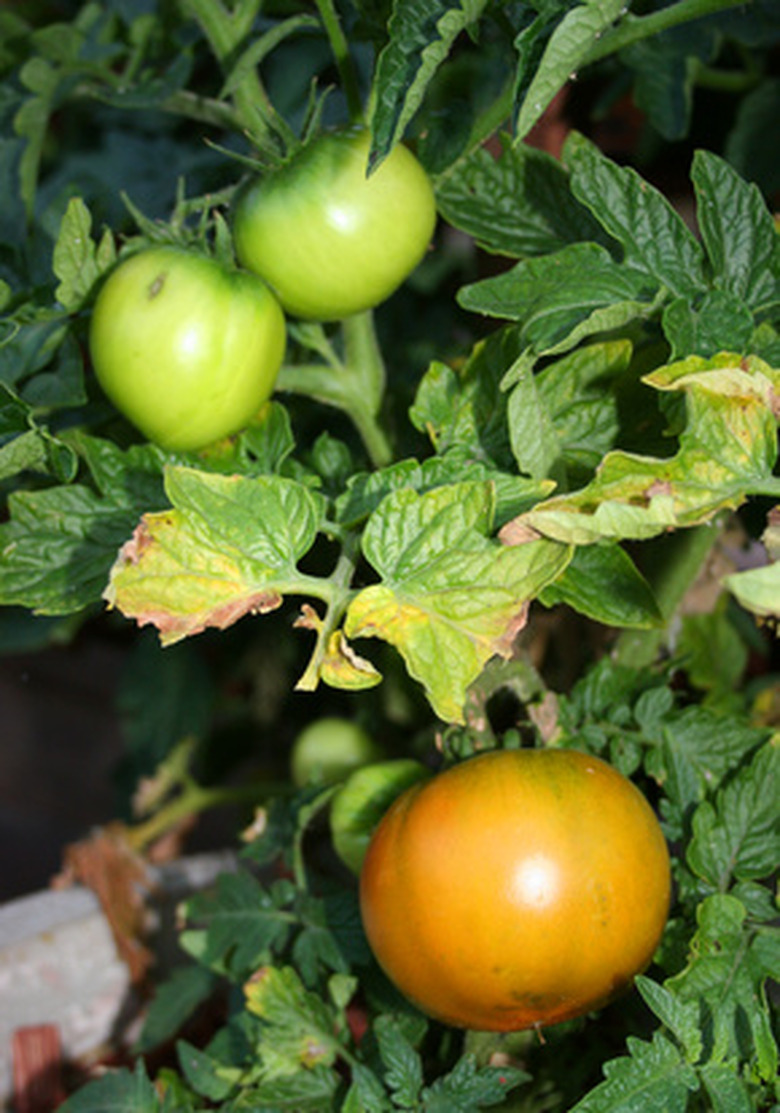What Are The Causes Of Brown On Tomato Plant Leaves?
A glance at the long list of diseases and pests that can attack tomato plants might make one wonder how any plants survive long enough to produce fruit. Disease, insects and parasites seem to prize tomatoes as much as home gardeners. But gardeners win out over pests more often than not and are rewarded for their efforts with juicy, ripe fruit. If you pay attention to the first signs of a problem with your tomato plants, you can head off disaster and enjoy the delicious fruits of your labors.
Bacteria
The bacteria Corynebacterium michiganense causes canker on tomato plants. The leaves of the plant wilt, curl up and turn brown. Only one side of the plant may be affected. T. A. Zitter of Cornell University recommends destruction of plants with canker in order to prevent the disease from spreading to healthy plants.
- A glance at the long list of diseases and pests that can attack tomato plants might make one wonder how any plants survive long enough to produce fruit.
- T. A. Zitter of Cornell University recommends destruction of plants with canker in order to prevent the disease from spreading to healthy plants.
Pseudomonas syringae causes bacterial speck in tomato plants while Xanthomonas campestris causes bacterial spot. Both are characterized by brown or black spots with a yellow halo around them. The two diseases can be difficult to tell apart. Zitter recommends planting disease-resistant varieties to combat these diseases. Copper sprays may also help protect plants from these bacteria.
Fungus
Fusarium oxysporum is a fungus that causes both tomato crown rot and tomato wilt. The leaves on plants stricken with tomato crown rot turn brown or black and die. To prevent the disease, look for plants labeled VFN, VFNT, VFNA or some variation. The F stands for Fusarium and indicates the plant is resistant to the Fusarium fungus.
- Pseudomonas syringae causes bacterial speck in tomato plants while Xanthomonas campestris causes bacterial spot.
- The leaves on plants stricken with tomato crown rot turn brown or black and die.
Early blight is caused by the fungus Alternaria solani, and is characterized by brown or black patches on the leaves and stem of plants. Laura Pottorff, a horticulturalist with Colorado State University, recommends crop rotation and allowing plenty of air circulation around plants as ways to combat early blight. Once plants are affected, sulfur dust may prevent further damage.
Pesticides
Overuse of certain pesticides can cause leaves to scorch or turn brown along the edge. Overapplication of malathion or glycophosphate can cause leaves to brown. Plants can survive such damage as long as too much of the plant isn't affected. Avoid using these pesticides too near tomato plants.
- Early blight is caused by the fungus Alternaria solani, and is characterized by brown or black patches on the leaves and stem of plants.
- Laura Pottorff, a horticulturalist with Colorado State University, recommends crop rotation and allowing plenty of air circulation around plants as ways to combat early blight.
